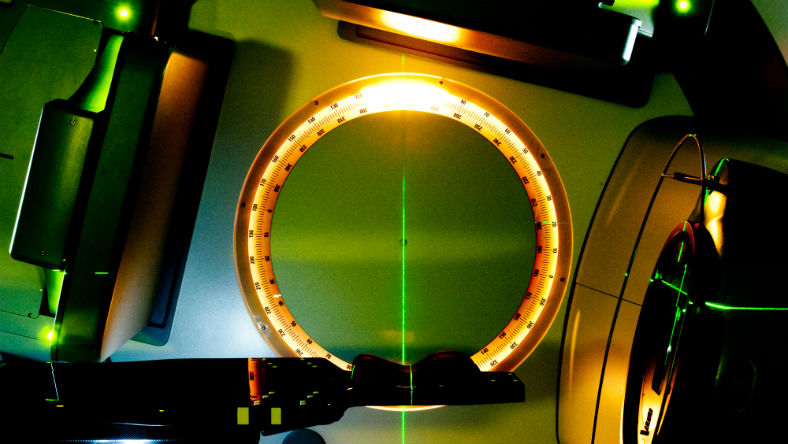Advanced radiotherapy techniques
We have made major contributions to modern high-precision radiotherapy techniques, such as intensity-modulated radiotherapy (IMRT) and image-guided radiation therapy (IGRT). These target radiation doses precisely to the shape of tumours, reducing toxicity and side-effects.

We have been pioneers alongside The Royal Marsden in developing radiotherapy as a treatment for cancer since the beginning of the twentieth century.
In the 1980s, Professor Steve Webb at The Institute of Cancer Research pioneered the application of mathematics to fine tune the shape of the radiation beam used, leading to the development of intensity-modulated radiotherapy (IMRT).
Concentrating radiation on tumours
IMRT enables the X-ray beam used in radiotherapy to be adjusted, changing beam shape and intensity as the machine moves around the body, to match the shape of the tumour. This spares the surrounding tissue, and allows higher intensities of radiation to be concentrated on the tumour.
We showed that this technique reduces the severity of side-effects, such as dry mouth in patients treated for head and neck cancers.
Advances in the imaging of cancer using scanning techniques, allowed the ICR and The Royal Marsden to extend the potential of IMRT by combining diagnostics and therapeutics in a new technique, known as image guided radiotherapy (IGRT).
Adjusting the beam
This allows the radiation beam to be adjusted based on feedback generated by a scanner that monitors the patient in real time. The technique can accommodate for movement of the tumour in the body as the patient moves, protecting surrounding tissue even more effectively.
After surgery, radiotherapy remains the most effective treatment for cancer. Our research into ways to target delivery of radiotherapy precisely to tumours has helped increase the effectiveness of radiation treatments, leading to changes in clinical practice, reduced treatment complications and improved cure rates.
References
Webb (2005) The effect on IMRT conformality of elastic tissue movement and a practical suggestion for movement compensation via the modified dynamic multileaf collimator (dMLC) technique, Phys Med Biol. 50 (6), 1163-1190. DOI:10.1088/0031-9155/50/6/009
Nutting et al. (2011) Parotid-sparing intensity modulated versus conventional radiotherapy in head and neck cancer (PARSPORT): a phase 3 multicentre randomised controlled trial, Lancet Oncol. 12,127-36. DOI: 10.1016/S1470-2045(10)70290-4
Related news
Related blogs
Blood cancer is an umbrella term for cancers affecting the blood, bone marrow or lymphatic system.

